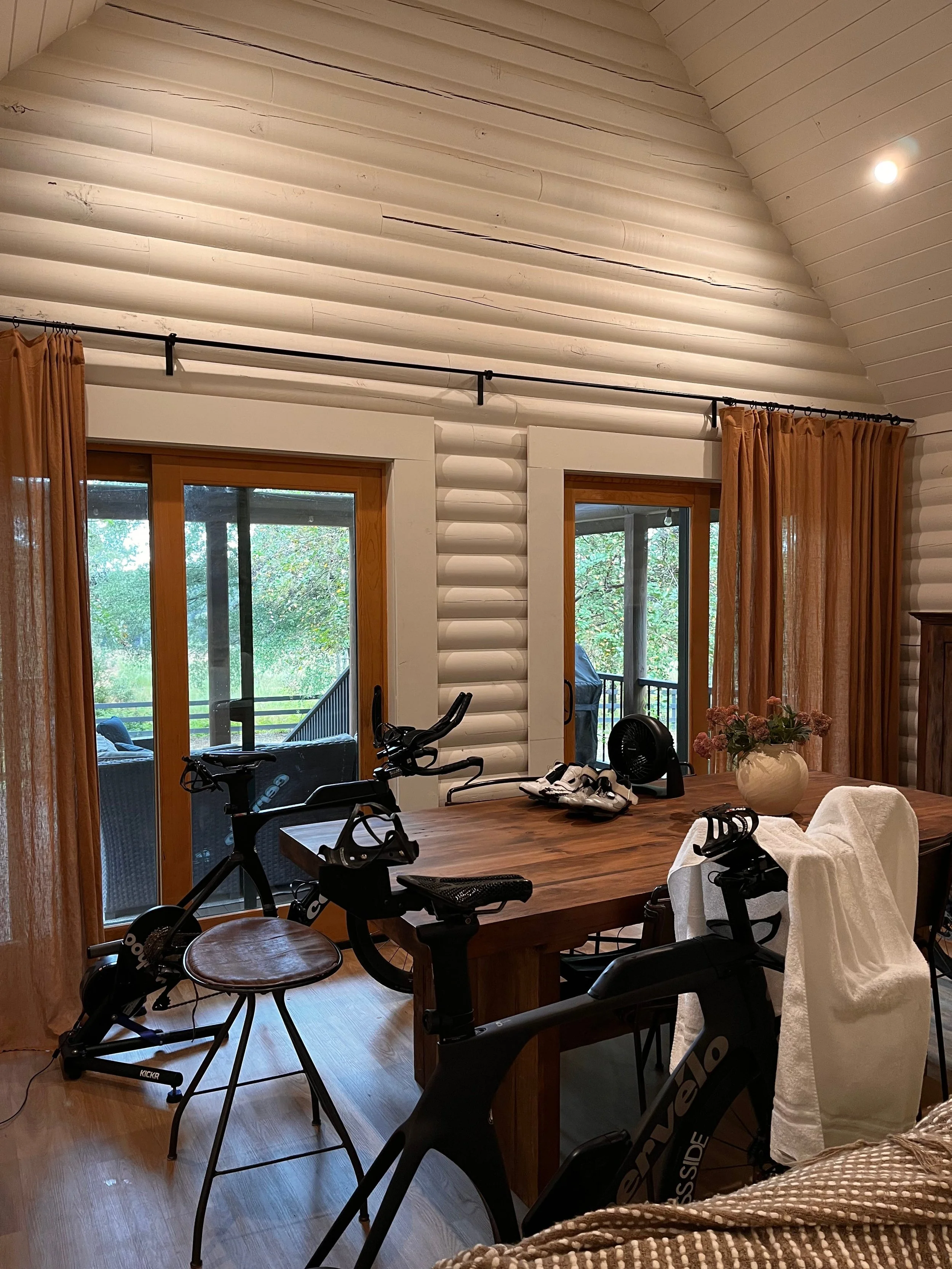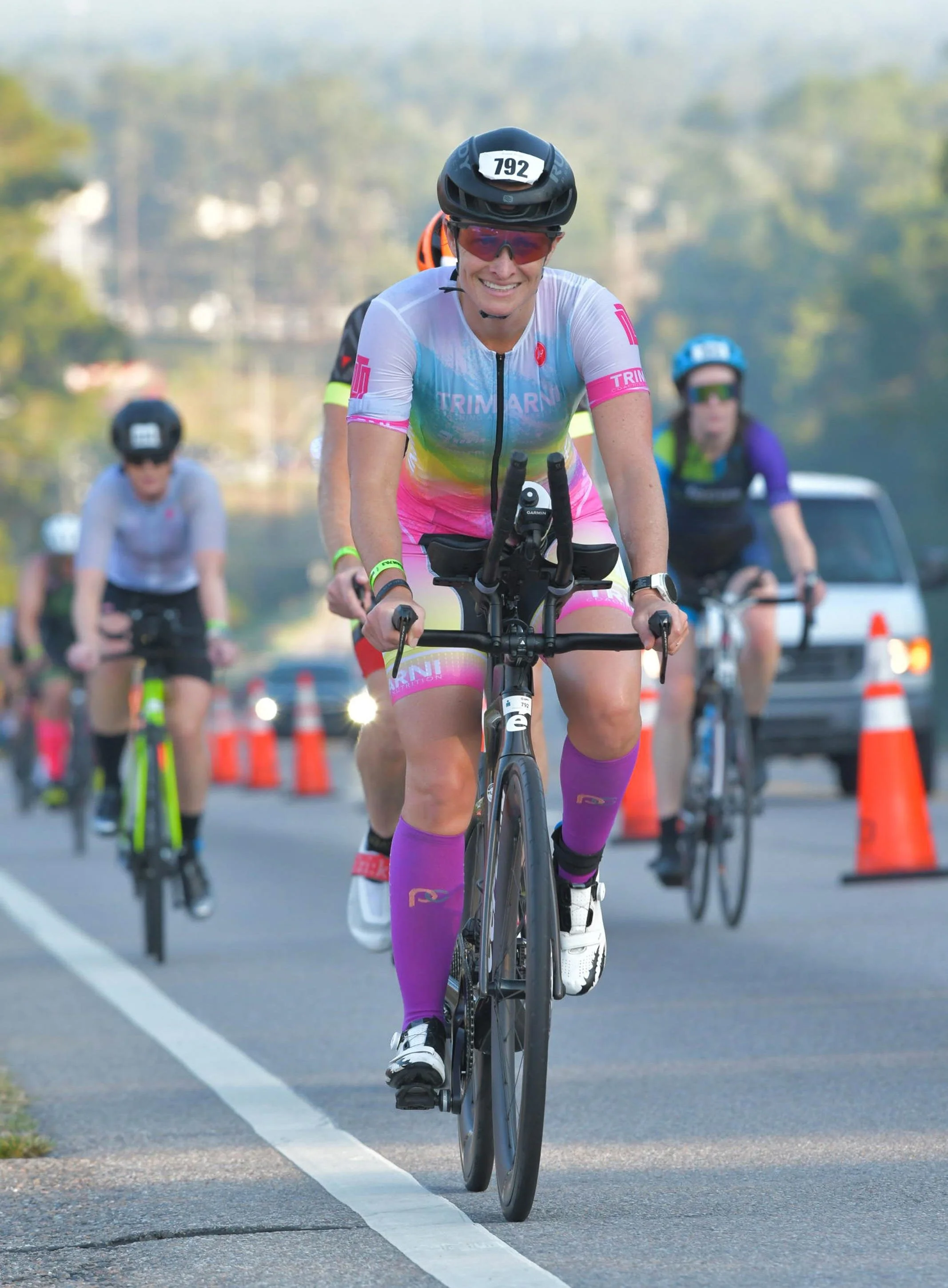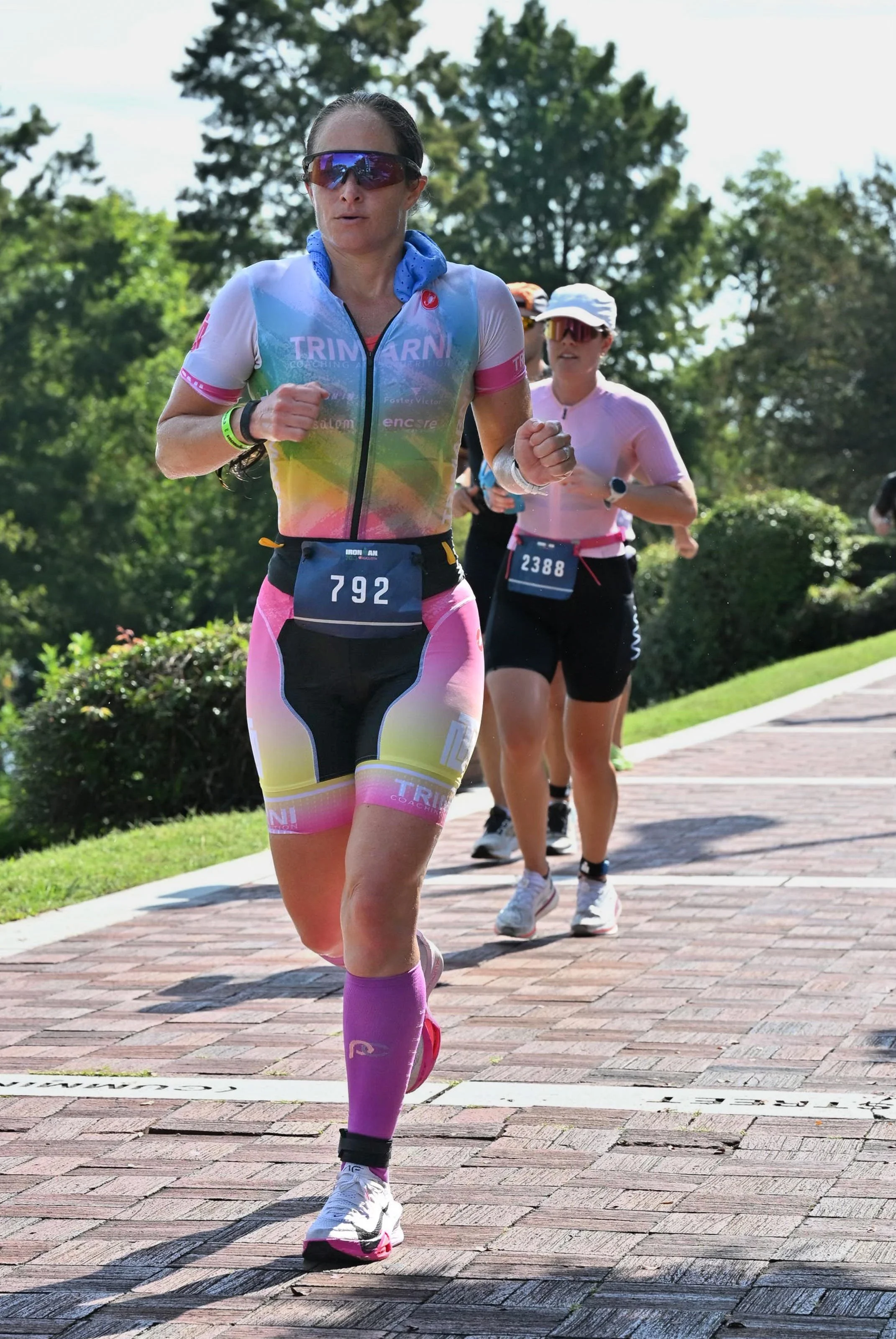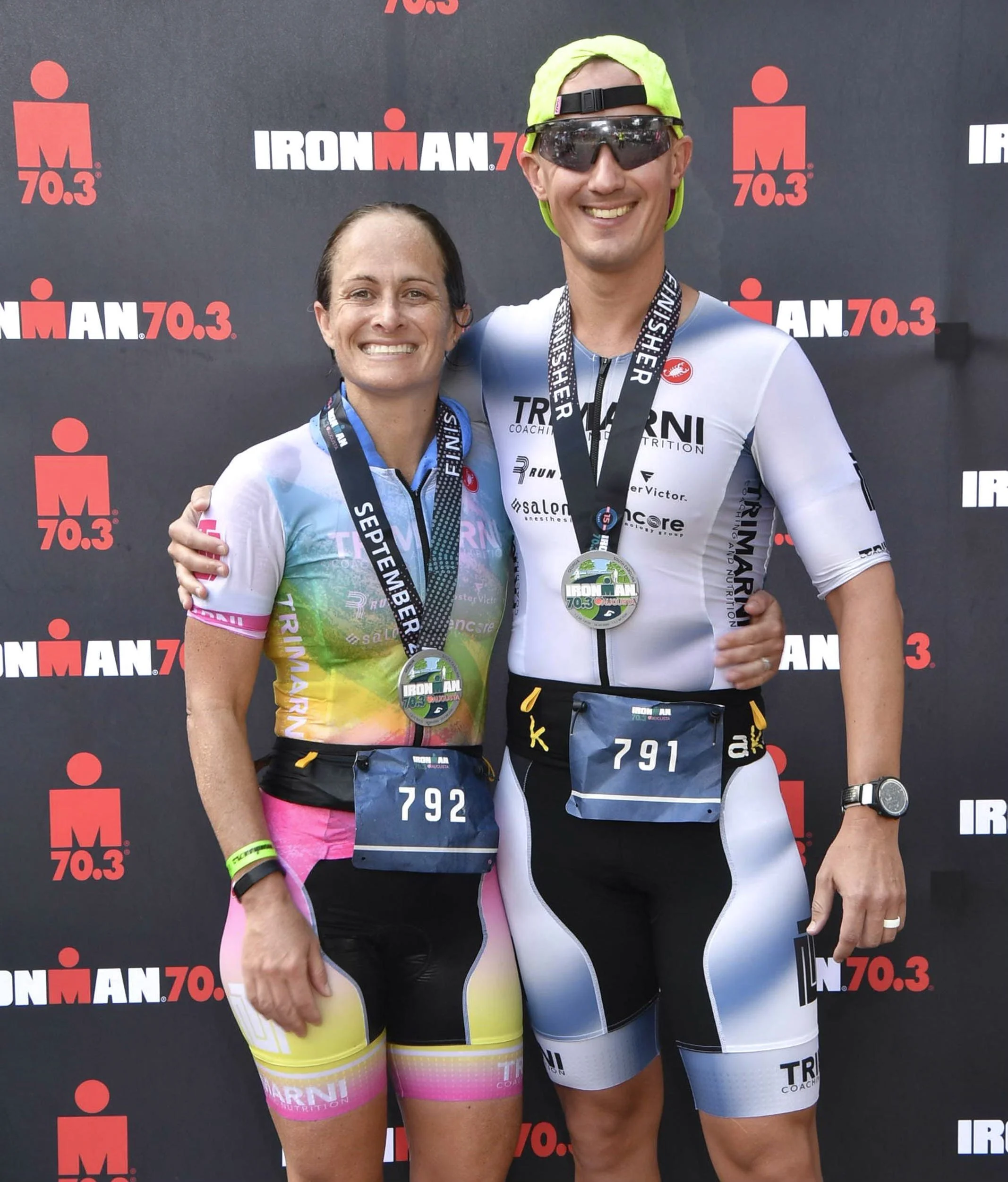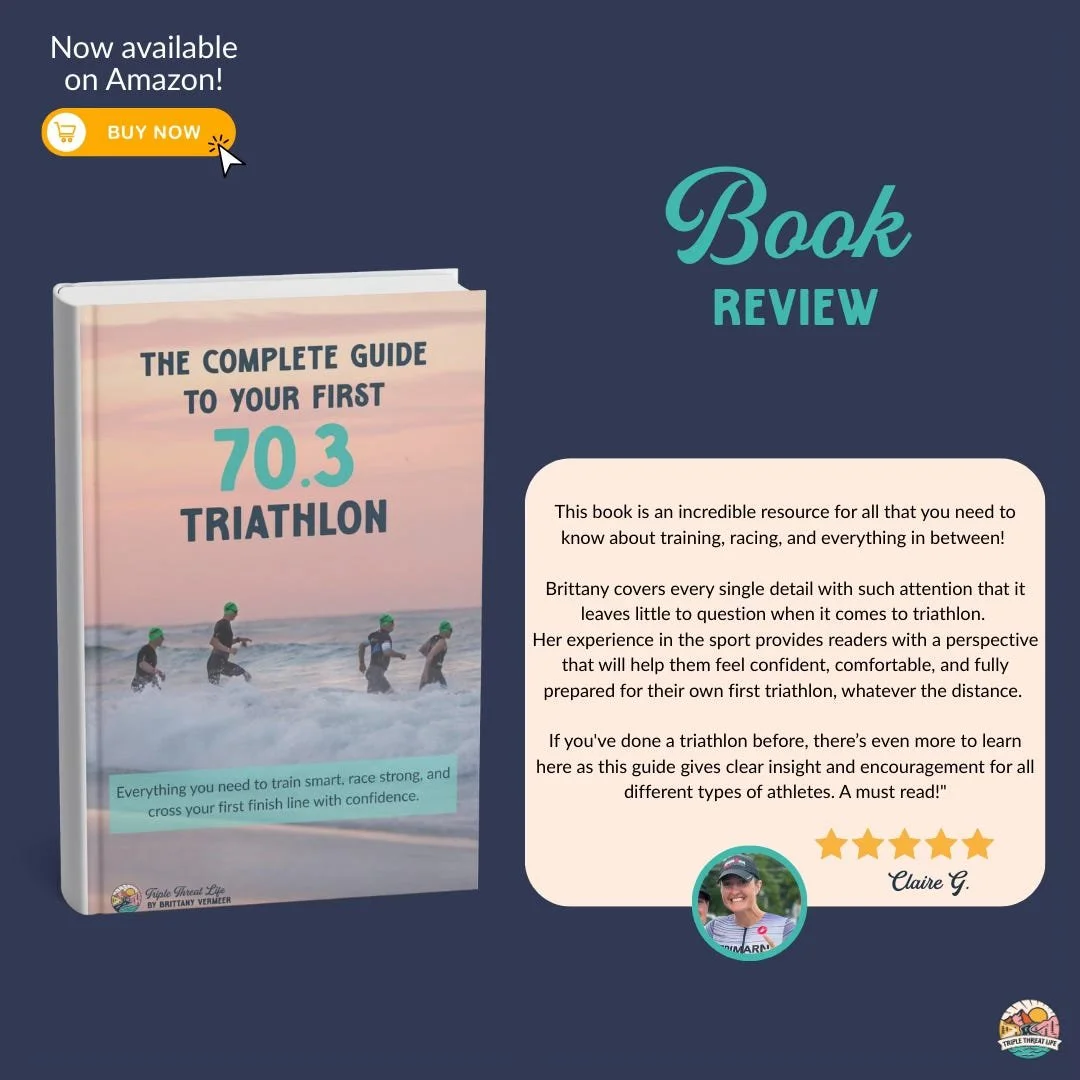Augusta 70.3- 2 Athletes, 1 Race Report
On Sunday, Matt and I did our ninth 70.3 triathlon!
It’s kind of crazy looking back- thinking about how I learned to swim, bike, and run while training for my first triathlon in 2019.
This was a repeat race for us- Augusta 70.3- and because we’ve done it before, we knew the course comes with some challenges and pretty brutal weather.
Going into a race like that, it’s important to have the proper perspective and realistic expectations. For both of us, this was an opportunity to practice our skills and fine-tune our race strategy before some big fall events.
As I like to do around here, this is a race report from the perspective of two different athletes. And it wouldn’t be a Triple Threat Life race report without a few tips to help you succeed at your next triathlon… ;)
*Paid subscribers get access to post-race video report with even more fun details at the bottom of this post.
Join the Triple Threat Life Club for access to bonus content, monthly expert webinars, free Triathlon Foundations e-book, partner discounts, and more.
Race Home Away From Home
Among our friends, Matt is known as the Airbnb Master. He has an uncanny ability to find the most spectacular accommodations wherever we stay- whether it’s a glass-walled cabin in Maine, a house-boat in North Carolina, or a villa in Spain.
This renovated Scandinavian-Rustic cabin was about 25 min. from transition. That’s a bit farther out than we typically stay, but if you’ve even been to Augusta, you know the better (safer) accommodations are on the north side, closer to South Carolina.
We live in Florida, so after a 6-hour drive north, we arrived at our race home away from home! You might notice (at least someone did on social media) that we brought our bike trainers with us. This was a purposeful decision.
TIP: If the race is drivable, and we’re not familiar with a safe place to ride, we’d rather cart along the extra gear. This way, we can get in our pre-race workouts without taking any unnecessary risks on unfamiliar roads.
Also on the docket pre-race was a swim, and since athletes aren’t allowed to swim in the river before race day, we had to find a pool. Matt had called ahead and found us a YMCA, but of course on the day we needed to swim, it was closed. Luckily, the lovely reception ladies hooked us up with a guest pass to the University of South Carolina-Aiken and sent us off with a few inspirational Bible verses.
Another important part of race week is Athlete Check-in, where you pick up your race packet with swim cap, morning clothes bag, timing chip, race numbers, and athlete wristband. Many races will also include hand-written notes from local school kids, which is a nice, personal touch. Ours were amazing.
“You got this! Just put your mind to it and you can win!”
If you want a specific breakdown of what we do in the 2 weeks before, 1 week before, 48 hours before, and 24 hours before a race, check this out.
One of the last things we do for race prep is put our numbers on our gear and pack our transition bags (checking our Packing List twice!) I saw that my sweet kitty, Jasper, had packed an extra item for me… His tiny, blue mouse!
Bike check-in was also somewhat eventful. There was a lot of rain before the race, and the entrance to transition flooded a bit, hence everyone wading through 6 inch deep water…
Race Day
Race morning was an early wake-up call of 3:50 am, and after a bit of foam rolling, mobility exercises, and breakfast, we were on our way! The swim at Augusta 70.3 is downriver, so once you set up your gear in transition, you hop on a shuttle bus that takes you to a staging area- a nearby baseball stadium. This is great because you have access to real bathrooms, but Matt waited in a very long line to use them. That’s another reason to plan ahead for even more time than you think you’ll need on race morning.
TIP: To decide what time we want to get to transition in the morning, we reverse engineer our schedule. The race start was 7:15 am for age-groupers. We plan for the time it takes to drive to the race, find parking, walk to transition, set up gear, ride the shuttle, use the bathroom, put on a wetsuit, and get lined up in the self-seeded swim corrals. That meant we needed to leave transition at 6:15, so we needed to get to transition at 5:30, hence leave the cabin at 4:50, so a 3:50 wake-up call.
The Swim
The swim downstream in the Savannah River is blazing fast and, the two times we’ve done it, wetsuit-legal (on the edge this year at 76°). I love this swim, and it was my best swim in a 70.3 by far. We’ve put in a lot more swimming volume than in the past, and it’s paying off big time. 25 minutes didn’t seem nearly long enough as I wanted to keep swimming!
Why swim so much when you know the swim will be fast, you might ask?
Simple. To get out of the swim and feel like you haven’t done much at all, so you can get to work on the bike. Less fatigue from the swim leads to a better bike performance. As a result, less fatigue on the bike leads to a better run. It all starts with the swim.
I felt super strong, sighted well, and had clean water almost the whole way, so it was a great start to the race. I was so excited that Matt had a great swim! He beat me to transition, and I was surprised to see him putting on his helmet. Here’s what he had to say.
“I was doing great until about 25 yards in when one of the kayaks tried to run me over… Nothing serious but I needed to take a second to collect myself… I can’t ever recall a 70.3 swim where I was passing people with the regularity that I was this time. I maintained a strong effort the rest of the swim. This was by far my best 70.3 swim, and I felt great getting out of the water too.”- Matt
The transition is long with an extended run along a concrete walkway and up a big hill. In lieu of wearing my compression sleeves under my wetsuit, I decided to put on full compression socks, which meant a few extra seconds in T1. But the long-term benefits would pay bigger dividends over the course of an almost 3 hour ride.
TIP: Do what you need to do in transition to set yourself up for success for the rest of the race. Transition lasts a few minutes at most, while a a 56-mile bike ride can take 2:45-4+ hours, so be smart and intentional with your choices.
The Bike
This bike course has pretty good road conditions (except one section), plenty of hills, and a lot of peaceful farm scenery. I even saw a teeny, black and white kitten watching all the crazy bike people go by his driveway. I enjoyed this bike course, but if you’re not prepared for the hills, it can catch you off guard.
There’s only 1,800 ft. of elevation over the course of 56 miles, but you have to look at the course map to see where and how that elevation occurs. At this race, there were 6 hills, lasting 3-5 minutes, all within the first 37 miles. After that, you have a flatter section with an out-and-back to the airport before you head back to town. That’s why I made a cue sheet that I taped to the top tube of my bike (great suggestion from my coach!) It helps you stay focused and present for each section of the bike. (I’ll be talking about how to make your own cue sheet in a future post.)
I felt super strong on the bike, and while hills and humidity haven’t necessarily been performance-enhancers for me in the past, this was my strongest 70.3 bike ride. I knew about the heat that was coming on the run, so I grabbed a bottle of water at every aid station to pour over my head and body to stay cool.
My bike fitness has been improving all year, so I was pleased to see my power right in the range where we’d planned.
“I turned onto the airport road and something hit my butt. I felt back and my bottle cages had come loose and were spinning. I was almost done with bottle #2, so I quickly drained it and grabbed bottle #3 out of the back cage. About 30 seconds later, I heard it fall off, and the bottle cages break on the ground. It sounded expensive. But I had my bottle of nutrition, and the lost cage was a problem for me to deal with after the race… Made it back to transition, and it was much easier to get off the bike without any rear cages, so that was a plus.”- Matt
The Run
This run was equal parts daunting and unpredictable. I’ve been transparent about recurring GI issues I’ve had on the run in the past. It’s something we’ve been diligently working on all year, so the goal was to run steady and stay as cool as possible.
This was also a new run course after some changes were made when Hurricane Helene hit the area in 2024. The new course goes across the bridge and onto the Augusta Greeneway, which I thought was excellent because it was shaded! This helped a lot, because it was 85° with 75% humidity, which is hot enough without direct sun.
Those athletes who didn’t read the course map to see that miles 3-6 is a gradual uphill to the turnaround, and miles 7-9 is a gradual downhill, were caught off guard. This meant you had to be patient and not get fooled by slower paces at the start. There was also a massive hill at mile 2 that you got to do again at the end. Yay!
I saw Matt on his way back in to town and blew him a kiss. Luckily, I was able to connect with a fellow TriMarni athlete, my new buddy Tanner! We had the same plan. Run to each aid station where we would walk and grab water and ice to stay cool.
Mile 10 was the lowest point. It took a lot of mental strength and positive self-talk to get through that last bit of the run. Finally, I rebounded a bit on the downhill in the last mile to the finish.
“After making it up the hill, I realized that it was going to be a long day on the run. I had cramps in both of my quads. I backed off the pace and tried to let my HR come down…. I hit a rough stretch at mile 11. I had to walk a few times in between aid stations, and I walked up the last big hill. I got a laugh as a guy next to me said, ‘this is a real b!tch.’ Tried to run the last mile, and it was my hamstrings turn to cramp. I kept it steady and made it through the end.”- Matt
The Finish
I told Tanner that as soon as we see Matt we’re 500 yards from the finish. This was our conversation during the last half mile.
Tanner: “Do you want to cross the finish line by yourself?”
Brittany: “Heck no! We’ve run all this way together.”
Brittany: “Are you a jog it in and celebrate, or a sprint-to-the-finish kind of guy?”'
Tanner: “Oh, I’m going to run to the line.”
Brittany: “It’s Matt! Where is the stupid finish line?!”
Matt: “You’re right there. It’s the blue arch at the corner. You’re doing great.”
Brittany: “I love you!”
What proceeded was a likely somewhat slow-motion-looking sprint to the line, followed by a collapse by the giant ice bucket, after which a lovely volunteer told me, “It’s not even as hot as previous years!” I chose not to reply to that statement, because I’m a good Christian woman and wouldn’t have said something very appropriate in my current mental state...
“Overall, my best ever swim, one of my best bikes, and a run performance that I really had to suffer through. I was only a few minutes off my 70.3 PR. I would describe it as a ’tough day at the office’ but an effort I’m extremely proud of.”- Matt
Oh yeah, almost forgot. I was 18th and Matt was 22nd.
In the post-race area, we caught up with another Tri-Marni athlete and pulled up the Ironman tracker and see how our coach was doing at Ironman Chattanooga. She won her age group and was third overall female! Yay Marni!
*We did think about you still out there on course, and it provided some perspective!
Me and my husband, Matt, at the finish line.
If you’ve been dreaming about doing a 70.3 triathlon, but are unsure how to start, what to focus on, and how to prepare, I wrote a book just for you!
The Complete Guide to Your First (or Best) 70.3 Triathlon is now available. It’s everything you need to train smart, race strong, and cross your first finish line with confidence. Also, BIG news… It’s now on Amazon as Kindle and paperback here!
*Paid subscribers get 25% off the new book.
Sign up for the Triple Threat Life Club for:
FREE Triathlon Foundations e-book
Monthly expert webinars and replay
Over a dozen premium gear and nutrition discounts
Members-only videos, tutorials, and guides
Discounts on future e-books and courses






